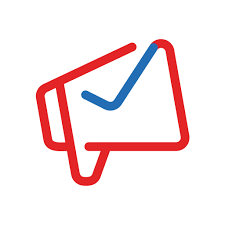Welcome to our comprehensive guide on building an email list. In this article, we will explore the importance of email lists, their benefits, and effective strategies to help you build a valuable and engaged subscriber base. As an expert in the field, I will share valuable insights and techniques that will empower you to grow your email list and drive business success.
Why Building an Email List Matters
Building an email list is a crucial aspect of any successful marketing strategy. Here's why it matters:
- 1. Direct and Personal Communication: Email allows you to directly reach your audience and communicate with them on a personal level. It provides a unique opportunity to establish a relationship and nurture customer loyalty.
- 2. Targeted and Relevant Messaging: By building an email list, you can segment your subscribers based on their interests, demographics, or purchasing behavior. This enables you to send targeted and relevant messages, increasing the chances of engagement and conversions.
- 3. Higher Conversion Rates: Studies consistently show that email marketing delivers higher conversion rates compared to other marketing channels. With a well-nurtured and engaged email list, you can drive sales, generate leads, and achieve your business goals.
- 4. Cost-Effective Marketing: Email marketing is highly cost-effective, making it suitable for businesses of all sizes. Compared to traditional advertising methods, email allows you to reach a large audience with minimal investment.
- 5. Long-Term Relationship Building: An email list provides an opportunity to establish a long-term relationship with your audience. By consistently delivering value, you can build trust, brand loyalty, and ultimately turn subscribers into loyal customers.
Effective Strategies for Building an Email List
Now that we understand the importance of building an email list, let's explore some effective strategies to help you grow your subscriber base:
1. Create Compelling Lead Magnets
Offer valuable content or resources, such as e-books, guides, templates, or exclusive access, in exchange for email subscriptions. This incentivizes visitors to provide their email addresses and join your list.
2. Optimize Your Website for Lead Generation
Place prominent and visually appealing opt-in forms on your website, such as pop-ups, slide-ins, or embedded forms. Make it easy for visitors to subscribe and clearly communicate the benefits they will receive by joining your email list.
3. Leverage Social Media Channels
Promote your email list on social media platforms by sharing engaging content and directing followers to your opt-in forms. Use enticing captions, compelling visuals, and clear calls-to-action to encourage sign-ups.
4. Host Webinars or Events
Organize webinars or events related to your industry or niche. Require registration to attend, and collect email addresses as part of the sign-up process. This allows you to expand your email list while providing valuable educational content.
5. Use Contests and Giveaways
Run contests or giveaways where participants enter by providing their email addresses. This strategy not only helps you
build your email list but also generates excitement and engagement among your target audience.
6. Optimize Email Opt-In Forms
Ensure your email opt-in forms are optimized for conversions. Use clear and compelling copy, minimize form fields to reduce friction, and implement A/B testing to optimize your opt-in rates.
Commonly Asked Questions About Building an Email List
1. How often should I email my subscribers?
The frequency of your emails depends on your audience and the value you provide. It's important to strike a balance between staying top-of-mind and avoiding overwhelming your subscribers. Test different frequencies and monitor engagement metrics to determine the optimal email frequency for your audience.
2. How can I improve my email open rates?
To improve email open rates, focus on crafting compelling subject lines that grab attention. Personalize your emails, segment your audience for targeted messaging, and consistently deliver valuable content. Additionally, optimize your preheader text and experiment with different send times to maximize open rates.
3. How do I retain subscribers and reduce unsubscribes?
To retain subscribers and reduce unsubscribes, consistently deliver value and relevant content. Segment your email list to send personalized messages, listen to your subscribers' feedback, and honor their preferences. Additionally, ensure your unsubscribe process is simple and transparent to maintain a positive user experience.
4. Is it important to comply with email marketing regulations?
Absolutely. Complying with email marketing regulations, such as the CAN-SPAM Act and GDPR, is crucial to maintain trust with your subscribers and avoid legal issues. Familiarize yourself with the regulations applicable to your region and ensure you have proper consent for sending marketing emails.
5. How can I measure the success of my email marketing campaigns?
Measure the success of your email marketing campaigns by tracking key metrics such as open rates, click-through rates, conversion rates, and overall engagement. Use email marketing analytics tools to gain insights into subscriber behavior and optimize your campaigns based on the data.
Conclusion
Building an email list is a powerful strategy for effective communication, customer engagement, and business growth. By implementing the strategies outlined in this guide and consistently providing value to your subscribers, you can create a thriving email list that drives results and helps you achieve your marketing objectives.

Building an Email List: The Key to Effective Communication and Business Growth
Discover the importance of building an email list and learn effective strategies to grow your subscriber base. Unlock the power of email marketing and drive business success with a valuable and engaged audience.




